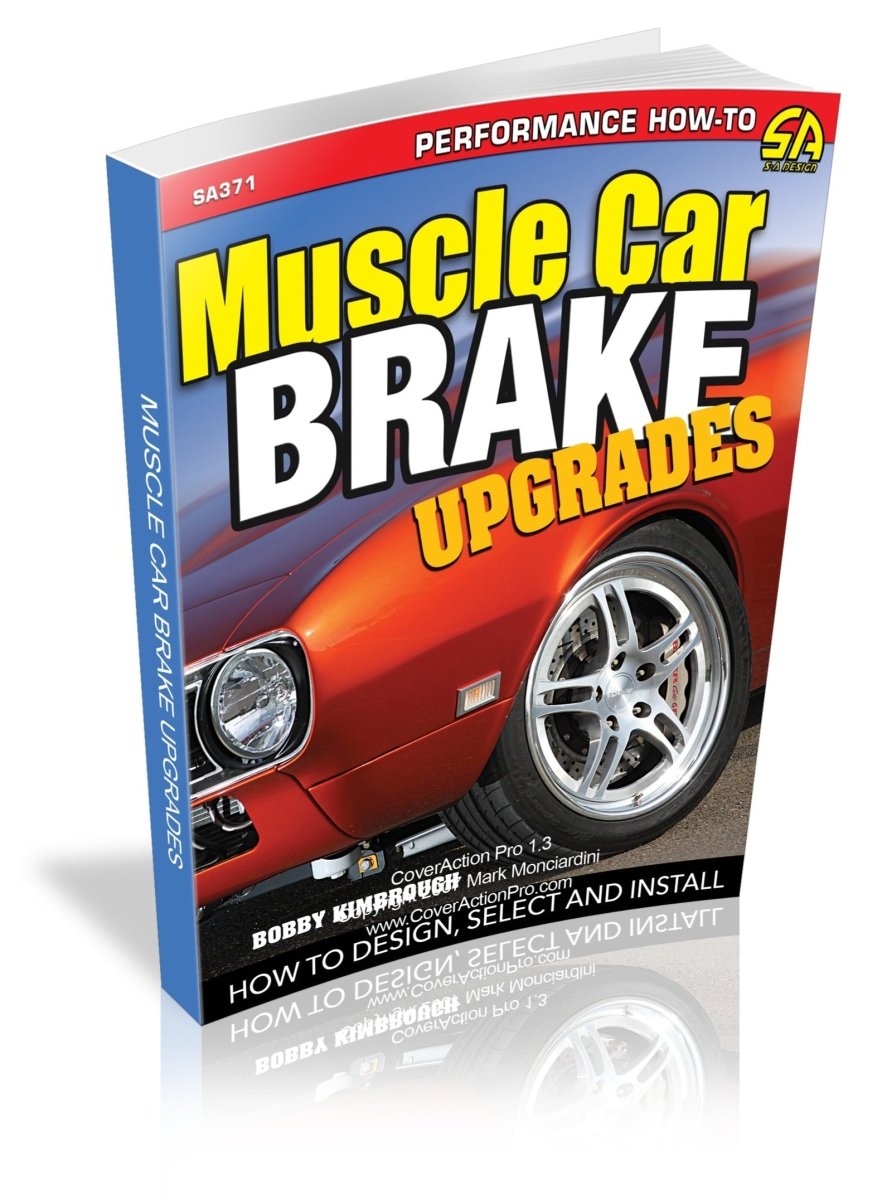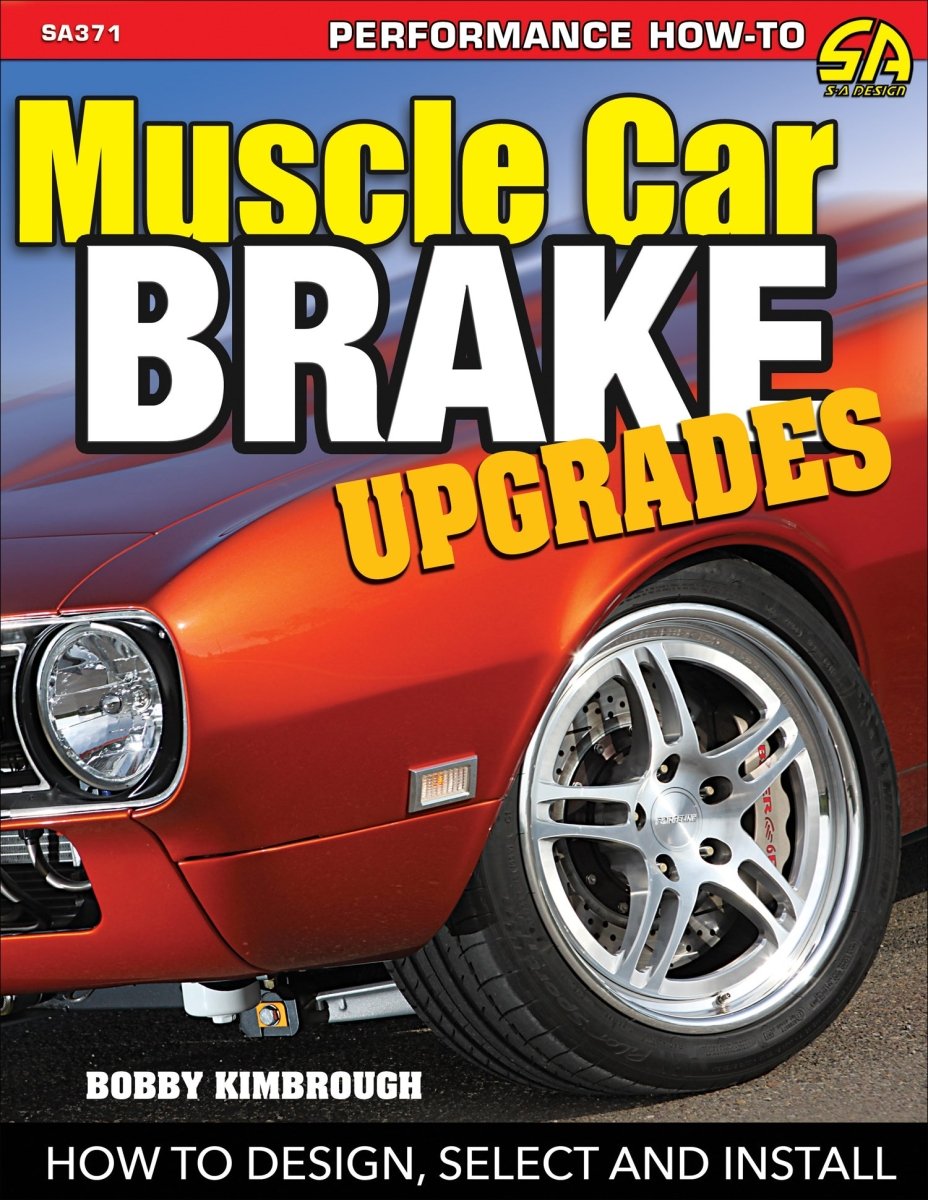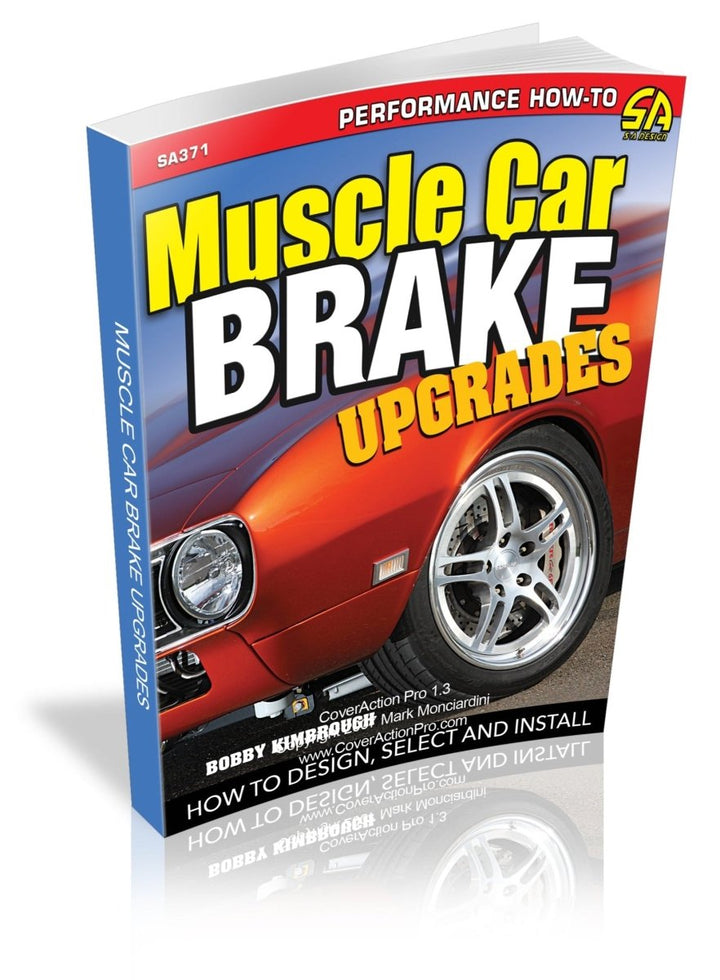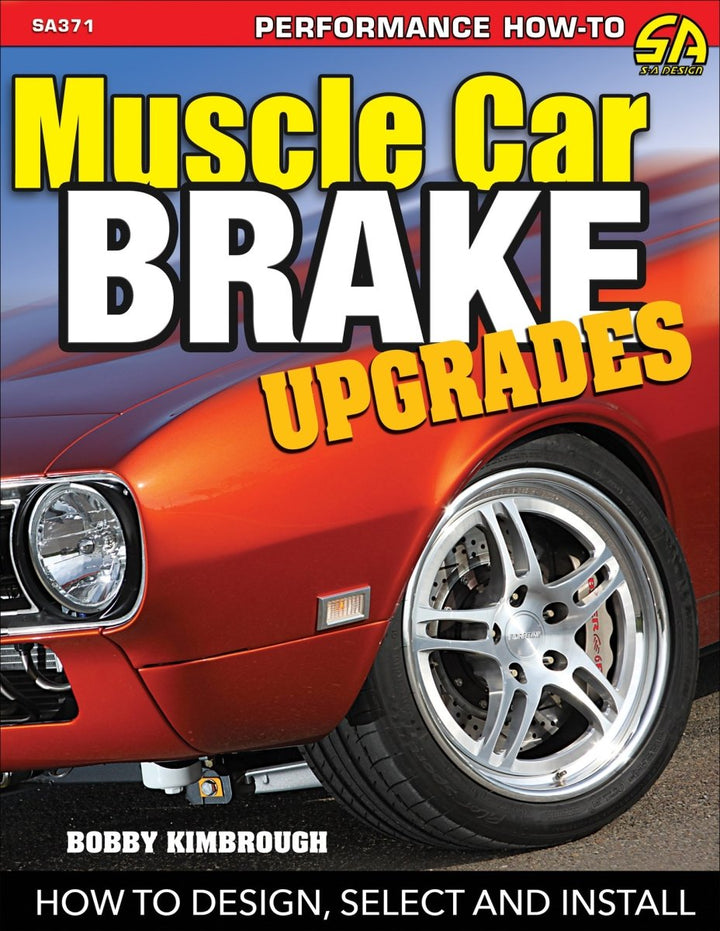Other brake system books cover all cars and all applications, but this book is dedicated to muscle cars only! With this volume, you can follow detailed, thorough, step-by-step procedures to install systems on a variety of popular muscle cars from Ford, Chrysler, and General Motors. As a result, you will have a car with brakes on par with the handling and horsepower of modified cars today.
Many 1960s and 1970s muscle cars still carry the outdated and rudimentary OEM drum or underpowered stock disc/drum brake systems. These hinder handling agility and stopping performance, and they are a subpar safety system. Muscle cars are meant to be driven aggressively, and the brake system needs to match the performance of the drivetrain.
The fundamentals of system design, operation, and component function are clearly explained so you understand all principles, equipment, and available kits. With this knowledge, you can select the best brake system for your car and application. However, selecting the right equipment is just the first step. This book delivers detailed step-by-step instructions and photos so you can confidently install an aftermarket high-performance brake system, such as a kit from Wilwood, Baer, CCP, and others on a variety of muscle cars. Covered are aftermarket brake conversions for factory size 14- to 15-inch wheels as well as installs for 16- to 20-inch wheels. You are shown how to select individual components and install master cylinders, steel-braided brake lines, calipers, rotors, and proportioning valves. Whether you're driving a high-performance street, Pro Touring, autocross, drag racing, or road racing car, these brake system installs dramatically increase performance and safety.
Dedication
Acknowledgments
Introduction
Chapter 1: The Evolution of Muscle Cars and Brakes
A Brief History of Muscle Cars
Theory of Braking Systems
Stability, Steering, and Stopping Distance
Engineering Details of Braking Performance
Force Conversions
How Upgrades Affect Vehicle Performance
Modern Braking Performance Versus High Performance
Chapter 2: Components and Their Functions
Brake Pedal and Assembly
Brake Fluid and Hydraulics
Master Cylinder
Power Assist
Brake Lines
Brake Valves
Residual Valves
Types of Automotive Hydraulic Brakes
Drum Brakes
Disc Brakes
Brake Lining Materials
Parking Brake
Brake Light Switches
Chapter 3: General Brake Upgrade Overview
OEM Conversions
Aftermarket Conversions
Wheel Fit and Tires
Caliper Types
Brake Rotor Choices
Application Selection
Power or Manual Brakes
Creating Braking Force with Calipers and Master Cylinders
Research
The Final Selection
Chapter 4: GM Brake Conversion: Budget-Friendly Upgrade
Beat the Drums
Discs
Rotors
Calipers
Brake Pads
Rear Disc Upgrades
Rear Brake Install
Front Brake Install
Chapter 5: Ford Disc Brake Conversion: Street/Strip Upgrade
Vehicle Interchanges/Crossovers
Grenada Front Brake Swap on Mustang
Ford Disc Brake Calipers
OEM-Style Front Rotors
OEM Master Cylinders, Power Units, Proportioning Valves
Aftermarket Conversions
High-Performance 1968 Ford Torino Big Brake Upgrade
Rear Axle Brake Kit
Chapter 6: Mopar Brake Conversion: Pro Touring Upgrade
Chrysler’s Muscle Car Brake Systems
The Baer Brakes Upgrade
The Rear Brake System
Don’t Forget the Master Cylinder
Chapter 7: Picking a System and Getting It Done
Deciding on Your Brake System
Research Options
Developing and Executing a Build Strategy
Routine After-Assembly Test
Breaking in the Brake Pads and Rotors
Post Bedding-In Inspection
The Last Word
Source Guide





